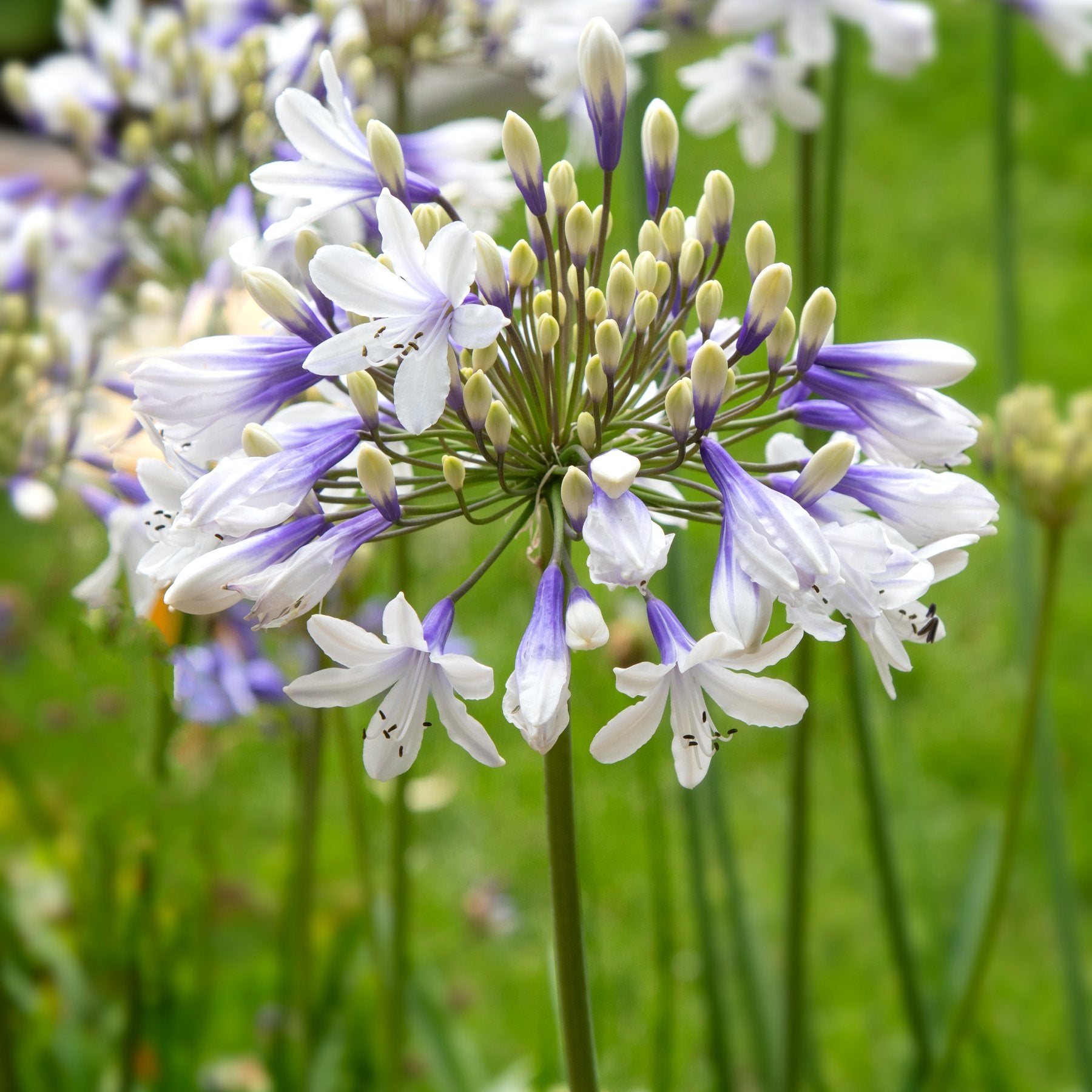Growing Agapanthus: A Full Guide to Beautiful Blooms
Growing Agapanthus: A Full Guide to Beautiful Blooms
Blog Article
Letting Loose the Secret to Successful Agapanthus Cultivation: Idea for a Flourishing Garden
In the realm of horticulture, growing agapanthus successfully calls for a calculated technique that incorporates numerous elements of plant treatment. By understanding the subtleties of agapanthus growing, one can develop an atmosphere where these plants thrive and grow abundantly.
Growing Agapanthus: Finest Practices
When growing Agapanthus, correct soil preparation is vital for making certain successful development and growth of these stunning blossoms. Agapanthus, typically referred to as Lily of the Nile or African lily, grows in well-draining dirt with a somewhat acidic to neutral pH level - Agapanthus. Prior to growing, it is essential to amend heavy clay soils with natural matter such as garden compost or peat moss to improve drain and provide vital nutrients for the plants
To plant Agapanthus, select an area that gets complete sunlight to partial shade, as this will certainly promote healthy and balanced development and plentiful flowering. Dig an opening two times the size of the plant's origin ball and position the Agapanthus at the very same depth it was formerly expanding. Carefully backfill the opening with soil, pushing down strongly to remove any type of air pockets around the origins.
Water the newly grown Agapanthus thoroughly and continue to maintain the soil evenly moist, specifically throughout the plant's energetic growing season. Agapanthus. Using a well balanced fertilizer once a month can even more sustain the plant's development and flowering. By complying with these finest methods for planting Agapanthus, you can develop a spectacular display of these fascinating blossoms in your yard
Perfect Dirt Conditions for Agapanthus
For optimum development and blooming success of Agapanthus plants, guaranteeing the soil conditions are ideal is essential. Agapanthus thrives in well-draining soil with a slightly acidic to neutral pH level ranging from 6.0 to 7.0. This type of soil permits ample water drainage, stopping waterlogging which can bring about root rot. To improve soil drain, consider adding organic matter such as compost or peat moss when preparing the growing site. Furthermore, Agapanthus chooses soil that is rich in nutrients, so including a balanced fertilizer during the expanding period can advertise healthy and balanced development and lively blossoms.

Watering and Fertilizing Tips
To make sure healthy development and vivid blooms, proper watering and fertilizing techniques are crucial for effective Agapanthus cultivation. Agapanthus plants take advantage of normal watering, especially during the growing period. It is recommended to water deeply once a week, ensuring the soil is moist however not saturated. During heat or in pots, even more constant watering may be essential to avoid the dirt from drying totally.
When it involves fertilizing Agapanthus, a balanced fertilizer with equivalent parts nitrogen, phosphorus, and potassium can be applied in the springtime to promote healthy growth and blooming. Slow-release fertilizers are suitable for giving nutrients slowly over an extensive period. Stay clear of over-fertilizing, as this can lead to excessive vegetation growth at the expenditure of flowers.
In addition, integrating organic matter like compost into the soil can enhance nutrient levels and boost dirt structure, aiding in the general health of the Agapanthus plants. By complying with these watering and feeding pointers, gardeners can ensure their Agapanthus plants thrive and produce stunning screens of blossoms.
Pruning and Deadheading Methods
Proper pruning and deadheading methods play a vital duty in keeping the health and wellness and appearances of Agapanthus plants, complementing the vital methods of watering and feeding for successful cultivation. Trimming Agapanthus entails eliminating invested flower heads, yellowing or dead leaves, and overall shaping of the plant to advertise better growth. Deadheading, the procedure of eliminating faded flowers, not only boosts the plant's appearance however additionally urges more flowering.
When deadheading Agapanthus, it is recommended to clip off the blossom stem at the base utilizing sharp, tidy shears. This process reroutes the plant's energy from seed production back into root and foliage growth, advertising a healthier and extra robust plant. Normal deadheading can extend the flowering period of Agapanthus and avoid self-seeding, which can cause congestion.
In terms of pruning, Agapanthus normally gain from a light trim after blooming to clean up the plant and urge fresh development. Reducing back the invested flower stems and eliminating any kind of dead or damaged foliage aids keep the plant's vitality and total appearance. However, it is important to prevent cutting into the crown of the plant, as this can compromise its health.

Protecting Agapanthus From Vermins and Diseases
Executing reliable bug and disease monitoring techniques is critical to protecting the wellness and vitality of Agapanthus plants in growing. One common bug that affects Agapanthus is the Agapanthus borer, a caterpillar that passages right into the plant, causing damages to the flowers and fallen leaves.
Along with insects, Agapanthus are prone to diseases additional reading such as origin rot and fungal leaf areas. These concerns can typically be prevented by making certain proper water drainage and avoiding overwatering. If indications of condition show up, affected components of the plant ought to be quickly gotten rid of to avoid additional spread. Fungicides might additionally be used as a therapy procedure, adhering to the maker's instructions carefully. By staying alert and resolving you can find out more bug and disease issues promptly, garden enthusiasts can assist their Agapanthus thrive and thrive.

Conclusion
Finally, effective cultivation of agapanthus needs correct growing techniques, suitable soil problems, ample watering and feeding, normal trimming and deadheading, and defense from conditions and pests. By complying with these methods and ideas, gardeners can make certain a growing yard full of stunning agapanthus blossoms. Agapanthus. Keep in mind to preserve consistent care and attention to information to promote the wellness and longevity of these magnificent plants
When planting Agapanthus, correct dirt prep work is crucial for guaranteeing effective growth and growth of these stunning blossoms.Water the recently grown Agapanthus extensively and proceed to maintain the dirt equally wet, particularly during the plant's energetic expanding period.For optimal growth and growing success of Agapanthus plants, ensuring the soil problems are excellent is vital. When hair transplanting navigate to this website or planting Agapanthus, guarantee the dirt is well-prepared to provide the required structure for the plants to establish themselves efficiently. One typical bug that influences Agapanthus is the Agapanthus borer, a caterpillar that passages right into the plant, creating damages to the flowers and leaves.
Report this page